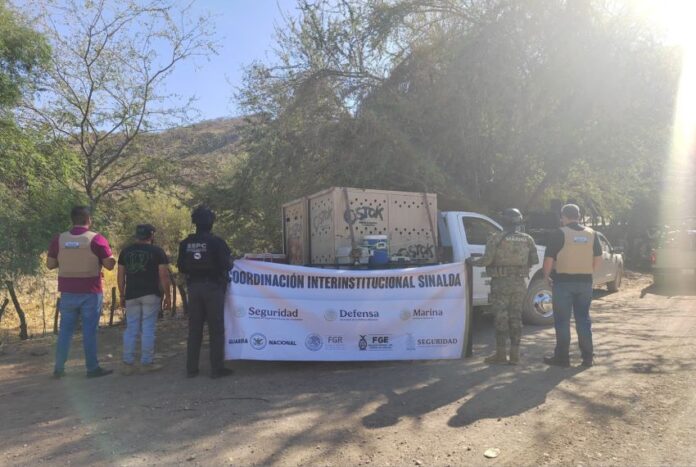Two Bengal tigers were rescued from an abandoned lot in San José de Gracia, a Sinaloa municipality located in an area known as the “Golden Triangle” — a key region for organized crime operations.
The rescue was carried out by Ostok Sanctuary staff on April 7 after receiving a report from the Navy Ministry (Semar) and the Office of the Federal Attorney for Environmental Protection (Profepa) about a pair of felines that were apparently abandoned.
View this post on Instagram
Sanctuary founder Ernesto Zazueta said both tigers — an adult white tigress and a yellow tiger — were displaying violent behavior.
“We responded to the call from Semar and Profepa to rescue two tigers,” Zazueta said. “We found them very upset, violent, and very aggressive. A tough rehabilitation task awaits us, but I believe we will succeed,” he noted in a video documenting the rescue.
Due to the risk they posed to security personnel, rescuers had to use chemical restraints to handle them safely, Zazueta added. The video shows that once they were calm, rescuers covered them with blankets to relocate them from the property where they were found.
The tigers’ aggressive behavior was attributed to their living conditions, as both were confined in small space. However, Zazueta said both animals appear to be in good health.
Authorities are yet to release information about who the property belongs to.
During the journey to Ostok Sanctuary, the rescuers and tigers were guarded by federal forces.
Zazueta revealed that since the armed conflict between factions of drug cartels began in Sinaloa on Sept. 9 last year, the sanctuary has rescued 14 large felines. “On average, we rescue two felines per month,” Zazueta remarked.
Last year, authorities also rescued 36 exotic animals from a private residency in the state of México. A report from newspaper El Financiero said that the property owner was “allegedly linked to the Sinaloa Cartel.”

According to a report by the Washington-based think tank Brooking Institution, criminal groups have turned to smuggling exotic animals, often to China. In exchange, China provides cartels with chemicals used in the production of fentanyl and methamphetamine.
Cartel associates are also known for sometimes keeping exotic animals as pets. In 2023, U.S. prosecutors revealed that a Sinaloa Cartel drug lord fed his enemies, alive and dead, to tigers that he kept.
